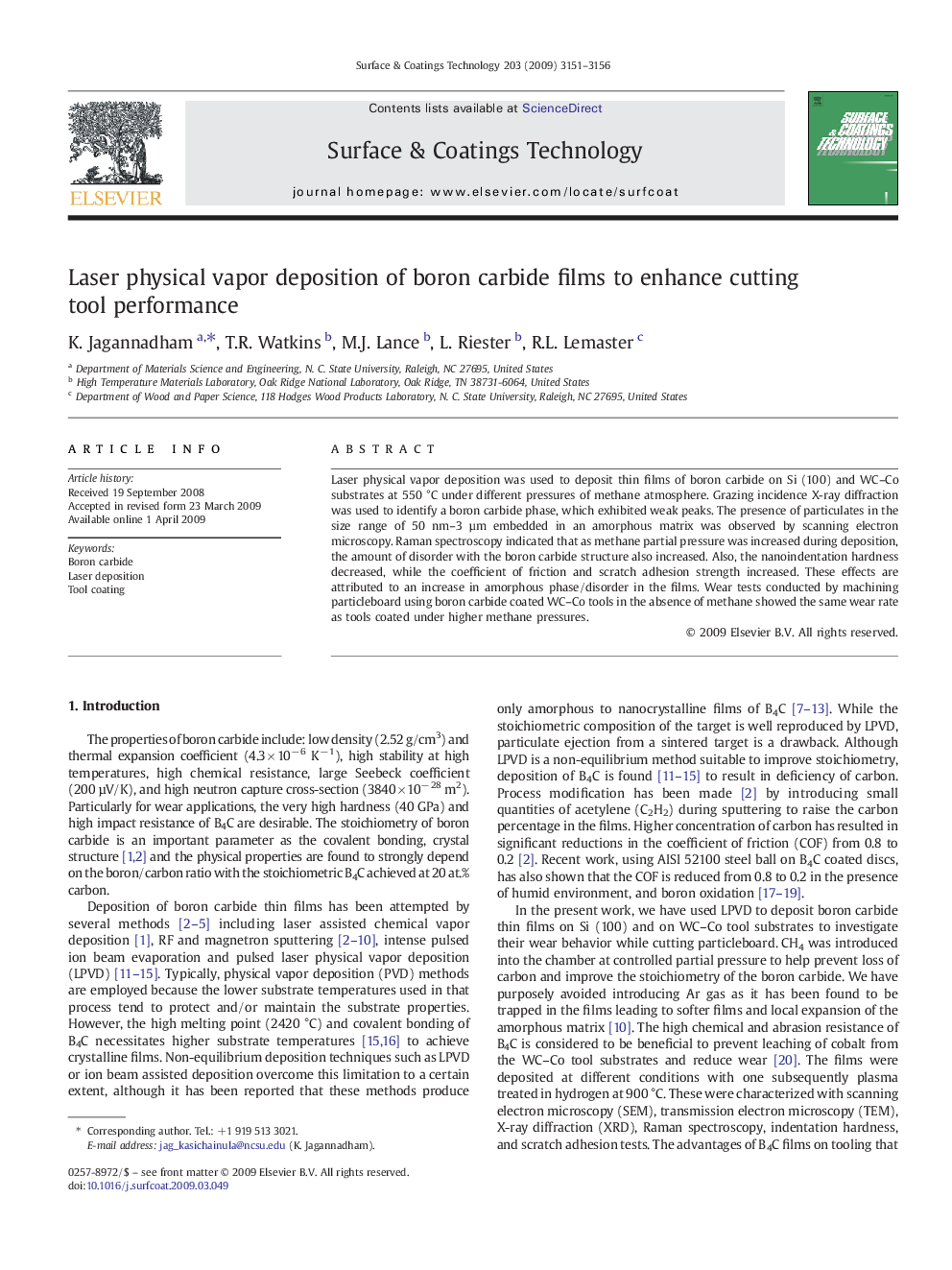| Article ID | Journal | Published Year | Pages | File Type |
|---|---|---|---|---|
| 1659934 | Surface and Coatings Technology | 2009 | 6 Pages |
Laser physical vapor deposition was used to deposit thin films of boron carbide on Si (100) and WC–Co substrates at 550 °C under different pressures of methane atmosphere. Grazing incidence X-ray diffraction was used to identify a boron carbide phase, which exhibited weak peaks. The presence of particulates in the size range of 50 nm–3 µm embedded in an amorphous matrix was observed by scanning electron microscopy. Raman spectroscopy indicated that as methane partial pressure was increased during deposition, the amount of disorder with the boron carbide structure also increased. Also, the nanoindentation hardness decreased, while the coefficient of friction and scratch adhesion strength increased. These effects are attributed to an increase in amorphous phase/disorder in the films. Wear tests conducted by machining particleboard using boron carbide coated WC–Co tools in the absence of methane showed the same wear rate as tools coated under higher methane pressures.
